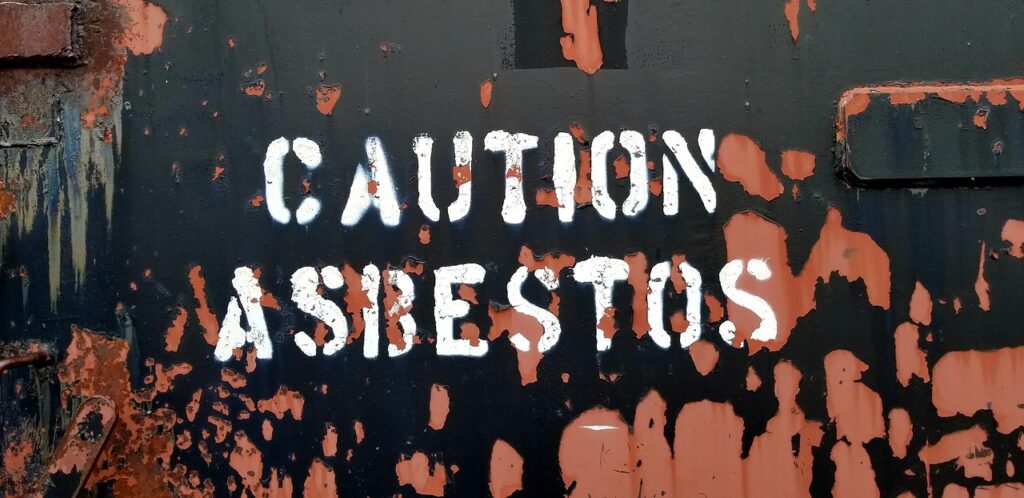Asbestos, once celebrated for its fire-resistant properties, has left a lasting mark on communities worldwide. This naturally occurring mineral, composed of microscopic fibers, found its way into countless buildings and products during the 20th century.
However, its widespread use came at a devastating cost. When disturbed, asbestos fibers become airborne, silently infiltrating lungs and lying inactive for decades before revealing their deadly nature. The resulting health impacts range from chronic respiratory issues to aggressive cancers like mesothelioma.
This led to a surge in asbestos lawsuits. Despite growing awareness and regulations, the ghost of asbestos exposure continues to haunt many, particularly in older structures and industrial sites. As families struggle with the long-term consequences of past exposures, asbestos lawsuits have become a crucial stage for seeking justice and compensation.
In this article, we will learn about one such place where residents have been suffering due to asbestos exposure for years. A place where many lives are at stake and families are at risk.
Railroad Leading to Fatal Diseases
In the heart of Montana, a small town named Libby fights with a decades-long tragedy. For nearly 25 years, this community of around 3,000 people has been fighting the devastating effects of asbestos contamination. The culprit? Vermiculite tainted with asbestos, which has claimed hundreds of lives and left thousands more ill.
At the center of this unfolding drama is BNSF Railway, a subsidiary of Warren Buffett’s Berkshire Hathaway Inc. The company now faces allegations of negligence and wrongful death for its role in spreading asbestos-laden dust across Libby’s neighborhoods.
One resident, a 61-year-old man, remembers playing baseball near the railroad tracks as a child. Little did he know that the dust clouds from passing trains carried a deadly weight. Today, he struggles with an incurable asbestos-related disease that has severely damaged his lung function.
The scale of this disaster is shocking. Health officials and researchers estimate that over 3,000 individuals in the Libby area have fallen ill due to asbestos exposure. The contaminated vermiculite once mined just outside town, was transported by rail and used as insulation across the United States.
Going Back in the History
The saga began in 1919 when a local rancher encountered a vermiculite deposit. He set a chain of events that would forever change the town’s fate. As mining operations expanded, so did the invisible threat lurking within the unrefined earth.
Even as the mine changed hands and its products spread across the country, the true extent of the danger remained hidden for years. The type of asbestos found in Libby, known as tremolite-actinolite or Libby Amphibole, is particularly dangerous.
Its needle-like fibers easily become airborne, increasing the risk of inhalation. The contamination was so widespread that traces of asbestos were found in soil, water, and even animal tissue throughout the area. Mesothelioma, lung cancer, and asbestosis have become all too familiar diagnoses for many residents.
Even after the mine was closed in 1990, Libby’s asbestos legacy still affects American homes and the Libby community. Many buildings still contain insulation made from contaminated vermiculite, posing ongoing risks to unaware homeowners and renovators.
The Legal Fight
As the first trial against BNSF Railway approaches, the company maintains its innocence. However, many Libby residents are determined to hold the railroad accountable for their suffering. The upcoming legal battle will focus on two individuals who lived near the rail yard and passed away due to mesothelioma.
The Environmental Protection Agency has been working to clean up Libby since 1999, spending an estimated $600 million in taxpayer funds. While progress has been made, the legacy of asbestos contamination continues to loiter in the community.
Health experts predict that new cases of asbestos-related illnesses will emerge for years to come. The U.S. government recently banned the remaining industrial uses of asbestos. However, this prohibition doesn’t address the type found in Libby or the ‘legacy’ asbestos already present in buildings nationwide.
According to the TorHoerman Law, every year, about 3,000 Americans are diagnosed with mesothelioma. It takes 20 to 60 years following asbestos exposure for the signs of this illness to appear. This happens usually after tumors have grown and spread.
Frequently Asked Questions (FAQs)
Are all asbestos fibers dangerous?
Yes, all types of asbestos fibers can be harmful when inhaled. However, some types, such as amphibole asbestos (e.g., crocidolite and amosite), are considered more hazardous than chrysotile asbestos. Prolonged exposure to any type of asbestos can increase the risk of developing asbestos-related diseases.
Can I get sick from a single exposure to asbestos?
While a single exposure to asbestos does not usually cause immediate illness, it still carries risks. The development of asbestos-related diseases typically occurs after repeated or prolonged exposure over time. However, it is important to minimize any asbestos exposure to reduce the risk of health complications.
Who is at risk of asbestos exposure?
Various occupations have a higher risk of asbestos exposure, including construction workers, miners, industrial workers, firefighters, shipyard workers, and asbestos product manufacturers. Additionally, individuals living in older buildings with asbestos-containing materials may also be at risk.
Can asbestos exposure affect my family members?
Yes, secondary exposure to asbestos can occur when fibers are brought home on work clothes, shoes, or through direct contact with an exposed individual. Family members who come into contact with asbestos fibers may also be at risk of developing asbestos-related diseases.
This environmental catastrophe has sparked a broader conversation about industrial responsibility and the long-term effects of toxic exposure. Advocacy groups and community initiatives have emerged, working tirelessly to educate the public about the dangers of asbestos and support those affected by related diseases.



